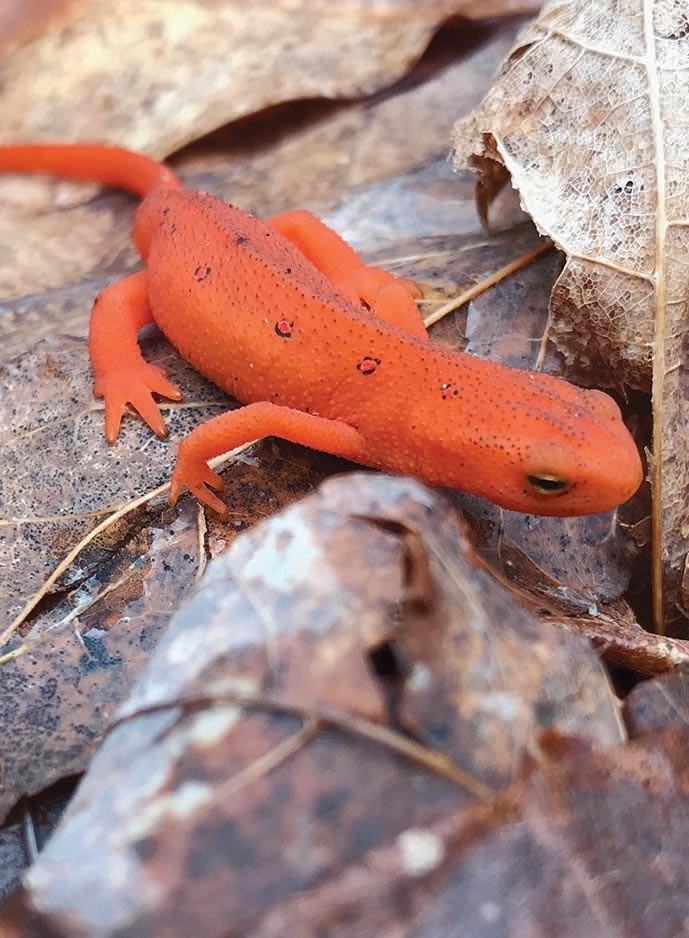Common green darners are among the largest dragonflies in the Northeast, and they are voracious predators, capturing large flying insects – including other dragonflies – while in flight. During their long larval stage in freshwater ponds, they are equally predatory, feeding on aquatic insects, minnows, tadpoles, and even developing froglets.
But whether they also feed on the larvae of eastern newts was unknown. Although newt larvae are similar in size to other green darner prey, newts also contain a neurotoxin that may make them unpalatable. So Brian Gall, a biology professor at Hanover College in Indiana, conducted a series of laboratory experiments to determine whether darner larvae will eat newt larvae and whether the newts employ any behavioral strategies to avoid being eaten.
The palatability question is particularly complex, as it is unknown how much neurotoxin the newts contain in larval form. Adult newts have only low levels of the toxin, and Gall said they are known to deposit some of their toxin in their eggs, but is it enough to repel green darner larvae? Juvenile newts – called efts – contain high levels of the toxin, even though it is believed that they are unable to produce it themselves.
In the first experiment, green darner larvae were provided newt larvae in all three developmental stages to determine which was preferred. “They ate them all,” Gall said. “Young ones were eaten, old ones were eaten, and metamorphs were eaten. That was a surprise.”
Next he assessed the survival rate of newt larva when exposed to dragonfly larva in environmental chambers. In two experiments, the dragonfly larvae ate 19 of 20 newt larvae. Because newt larvae rely on their sense of smell to detect predators, Gall then placed newt larvae in water previously containing green darner larvae, and it became clear that the newts could smell the dragonflies. They immediately slowed down their movements.
“Even though they don’t have enough toxin to protect themselves, the newt larvae have behavioral mechanisms to help keep them safe,” Gall explained. “When they smell a dragonfly, they reduce their activity and hide by sitting at the bottom of a pond until they don’t smell that dragonfly anymore.”
Given how voraciously common green darner larvae prey on newt larvae in controlled experiments, one might think that the newts may struggle to survive in the wild. But Gall isn’t worried about them. “I’m sure the dragonflies are eating a lot of newt larvae, but every fall we find thousands of developing efts, so the dragonflies aren’t getting close to eating all of them. The newts have evolved mechanisms to survive.”
Still, he’s curious how the relationship plays out in the wild. “Newts aren’t confined in a little dish with nothing to hide them,” he said. “I’d like to look at mortality rates in the field and understand how successful dragonfly larvae are in the wild when they have other things to eat. How likely are newt larvae to survive in those conditions?”



Discussion *